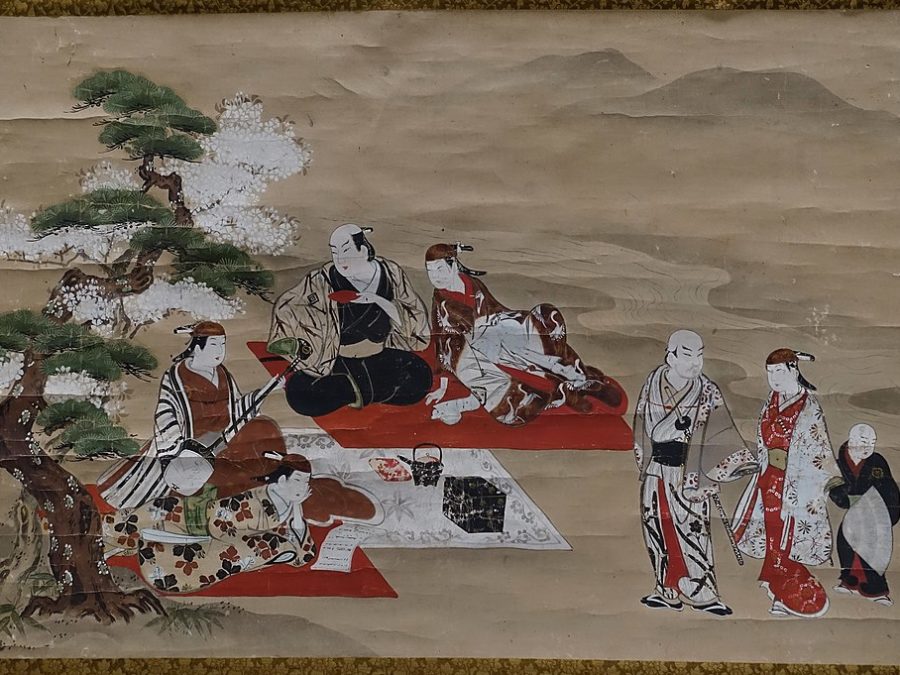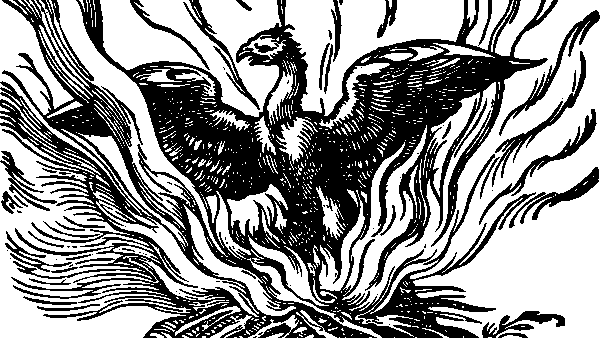The theme of honour runs through many of the fictions of Jorge Luis Borges. But why bother retelling such a well-known story if all you’re going to do is reinforce the standard narrative?
The theme of honour runs through many of the fictions of Jorge Luis Borges. Even the knife fighters and thugs he portrays killing each other on the back streets of Buenos Aires often have a strong sense of honour. In his short story, The Uncivil Teacher of Court Etiquette: Kôtsukéno Suké, Borges explores an extreme form of honour through a story of ritual suicide and vengeance in 18th-century Japan.
The Story That’s Not Really About Kôtsukéno Suké
It’s an unusual story in that the title character, Kôtsukéno Suké, appears relatively briefly in the tale. He plays an important role, but more in terms of inciting the action to start than in driving it himself.
As the teacher of court etiquette in a rigid, rule-based society in which etiquette plays a major role, you’d expect Kôtsukéno Suké to be a man of honour. After all, he is the man responsible for ensuring adherence to the complicated code of honour developed over centuries:
“Two thousand three hundred years of courtesy (some mythological) had brought the rituals of reception to a fine point of anguished complication.”
But his arrogant and aggressive manner of teaching provokes the lord of the castle of Ako into striking out at him with his sword. Although his injury is only minor, the lord is condemned by the military court to be “allowed to commit hará kiri.” His castle is confiscated, his family ruined, his loyal retainers left to roam the land as Rônins.
This is where the real story begins: the tale of the forty-seven Rônins patiently waiting for their chance to avenge the death of their lord. Their leader sacrifices his own honour by getting drunk and frequenting the brothels and gambling dens of Kyoto, but only to lull Kôtsukéno Suké into a false sense of security and trick him into relaxing his defences, thinking he is safe.
When the time is right, the Rônins move to attack the fortress of Kôtsukéno Suké. While his retainers fight to the death, the man himself cowers in an inner courtyard concealed behind a false mirror. When the Rônins give him the chance to commit suicide, he refuses:
“He was a man impervious to the pleas of honor; at sunrise, the officers had to slit his throat.”
Their mission complete, the surviving Rônins deliver the severed head of Kôtsukéno Suké to the temple that houses their lord’s remains, where they commit mass suicide and lie alongside him.
Different Forms of Honour
Why does Borges tell us this story, which as he acknowledges himself, has been told in different forms before? I think it’s about exploring different forms of honour.
The story shows that strict adherence to long-established rules is not the same thing as honour. Kôtsukéno Suké is a well-respected teacher of the complex set of rules governing every minute aspect of courtly behaviour. But his arrogance is what sets the whole sorry story in motion, and when forced to face the consequences, he hides behind his retainers and then refuses to do the “honourable” thing.
The lord of the castle of Ako, on the other hand, violates the rules by striking out at Kôtsukéno Suké, but he shows honour in facing up to the consequences of his actions, and we must presume that he lived his life in an honourable way because his retainers were so loyal as to die for him.
The story also, for me at least, provokes questions of what honour means and whether it’s a good thing. Should a single moment of irritation and a minor injury really result in so much death and destruction? Should a lord’s retainers really be so loyal to him that they must not only avenge his death but also kill themselves and lie beside him in death?
Today, we’ve lost that sense of honour and unquestioning loyalty to our social superiors, at least in the extreme forms presented in this story, but is that such a bad thing? Where vestiges survive, they mostly seem to me to be unnecessarily destructive: think of “honour killings” by religious extremists or gang warfare prompted by the need to save face. Or think of states and presidents killing to preserve the honour of the nation, episodes that usually also involve calls for unquestioning loyalty to our superiors. I’m reminded of living in a post-9/11 America, when vengeance was official policy and those who questioned or opposed it were the enemy. We all know how that turned out.
The heroes of these stories of honour are usually men, as is the case here, and what’s always missing is what their noble sacrifices mean to those around them. Were the families of those loyal retainers really happy that their husbands and fathers died for a distant lord and an abstract code? What happened to them afterwards?
Have these notions of honour and vengeance done more good or more harm in the world? What about alternative methods of solving our problems without mass killing and/or ritual suicide? It’s disappointing that Borges doesn’t appear to ask any of these questions in his retelling of the tale. He does his usual altering of names and distorting of facts, but he leaves us with the standard narrative of heroic male sacrifice:
“This is the end of the story of the forty-seven loyal retainers—except that the story has no ending, because we other men, who are perhaps not loyal yet will never entirely lose the hope that we might one day be so, shall continue to honor them with our words.”
Why bother retelling such a well-known story if all you’re going to do is reinforce the standard narrative? I’m not sure of the point of this story, and I’d be glad if someone in the comments would like to enlighten me.
To be honest, I’m happy to be nearing the end of Borges’s first collection, A Universal History of Iniquity, so that I can move on to the later stories, which I find much more interesting.
To read more of my reviews of all the short stories of Jorge Luis Borges, check out my Borges Marathon page.




There are 8 comments
This is interesting; I don’t recall reading this one (maybe I was just puzzled and moved on) so I enjoyed reading your thoughts on this one. I learned about ritual honour killings as a kid, via the mini-series Shogun. This would not have been adequate preparation for Borges’ examination, I’m sure. Heheh
Ah, I’m glad I’m not the only one who forgets stories 😉
Thanks, nice post. Encouraging me to read more stories by Borges
Thanks Emma! I enjoyed your recent series on the Ficciones too—I’d encourage anyone reading these comments to check it out here: https://wordsandpeace.com/tag/ficciones/
I have not read this story, but I wonder, might Borges be making some subtle comment on how absurd it is? I mean, reading your description of the story all I could think about was the stupidity of the whole concept of honor and dying for it. Is he maybe trying to provoke readers to that realization?
Ah, that’s an interesting idea, Stefanie! I guess it’s possible, but if that’s true, it’s VERY subtle. I’ll go back to it now and see if I can find any little hints.
Well, one hint is that the story is included in a volume entitled “Universal history of infamy”, together with that of great criminals, cheats, etc.
Also, is the last seppuku, that of the man who had spat upon the counsellor, really in any of the source material? If not, Borges has added one man to the carnage, rather than subtract one (in the original account, 47 ronin attack, and 46 are ordered to kill themselves; one, the messenger, is pardoned).
Hi Garald, Thanks for your comment. I read the “infamy” as belonging to the cowardly Kira Kôtsukéno Suké, who brought about the lord’s death and refused to kill himself when cornered. The carnage of the avenging ronin seems to be treated as entirely honourable. I don’t see any irony or censure in Borges’ conclusion: “we other men, who are perhaps not loyal yet will never entirely lose the hope that we might one day be so, shall continue to honor them with our words.”
I checked and the man from Satsuma who spits on Oishi Kuranosuké does appear in the original Forty-Seven Ronin legend, more or less exactly as Borges tells the story. Interesting point about the messenger being pardoned in the original, though.